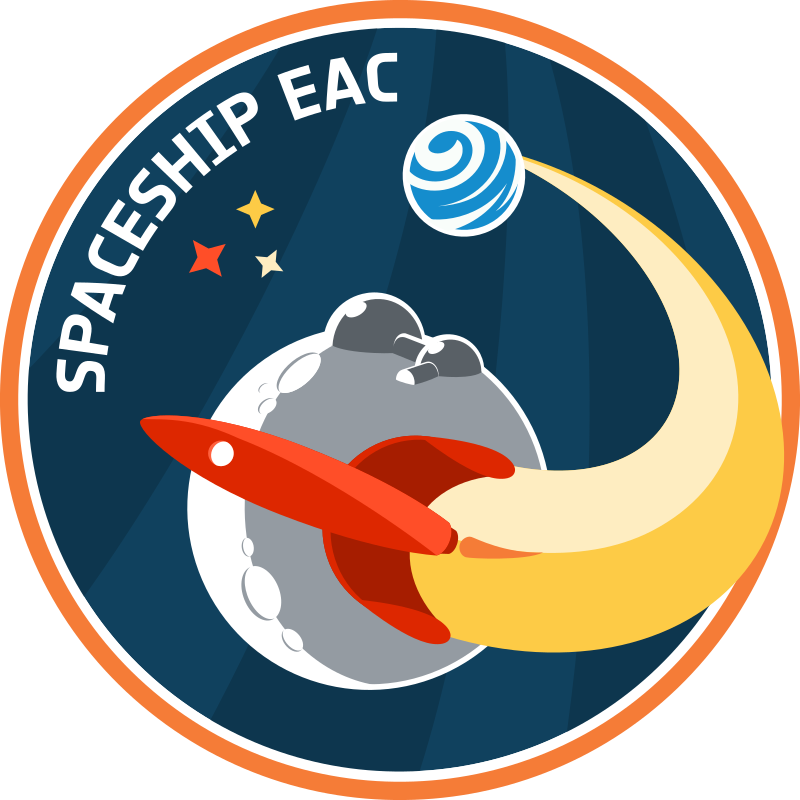Working on joint projects between the Spaceship EAC and the Space Medicine teams, he investigated engineering solutions to biomedical problems – ensuring better health for astronauts in space and people on Earth.
The projects Justin worked on aim to improve medical assistance by reducing the impact of microgravity on the human body and enhancing biometric communication. The first is a special suit designed to squeeze its wearer tight.
Skinsuit 2.0
During their missions in space, astronauts often suffer from backache as their spines lengthen in weightlessness. To combat these effects, a tailor-made suit known as the Skinsuit was designed to squeeze the body from the shoulders to the feet, though the suit only exerts a fraction of the force felt on Earth.
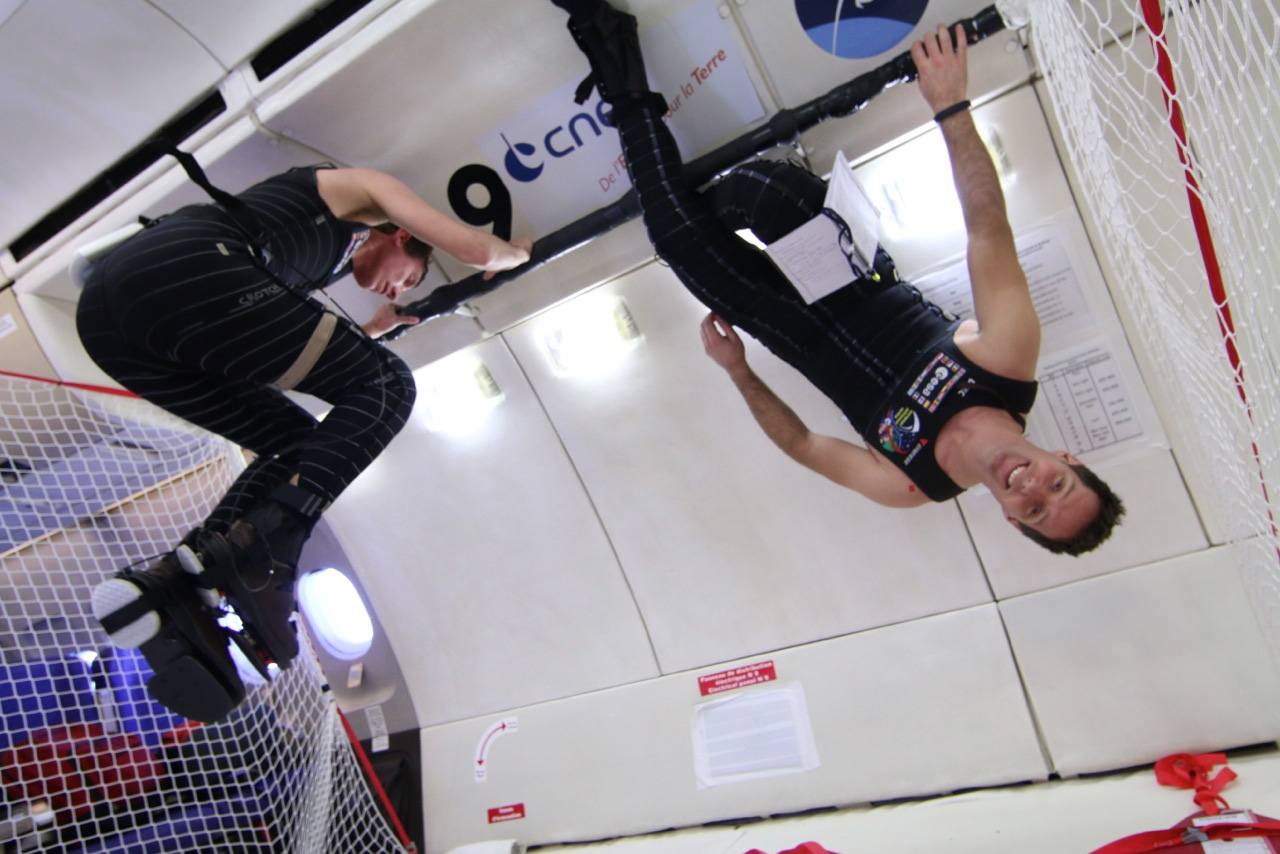
ESA astronaut Thomas Pesquet testing Skinsuit in weightlessness. CNES/Novespace
The original suit uses a bidirectional elastic weave to apply constant pressure to the body, specifically around the spine. Justin replaced these elastics with a special fibre feedback loop embedded in the textile suit. “This essentially acts like pseudo gravity”, Justin explains.
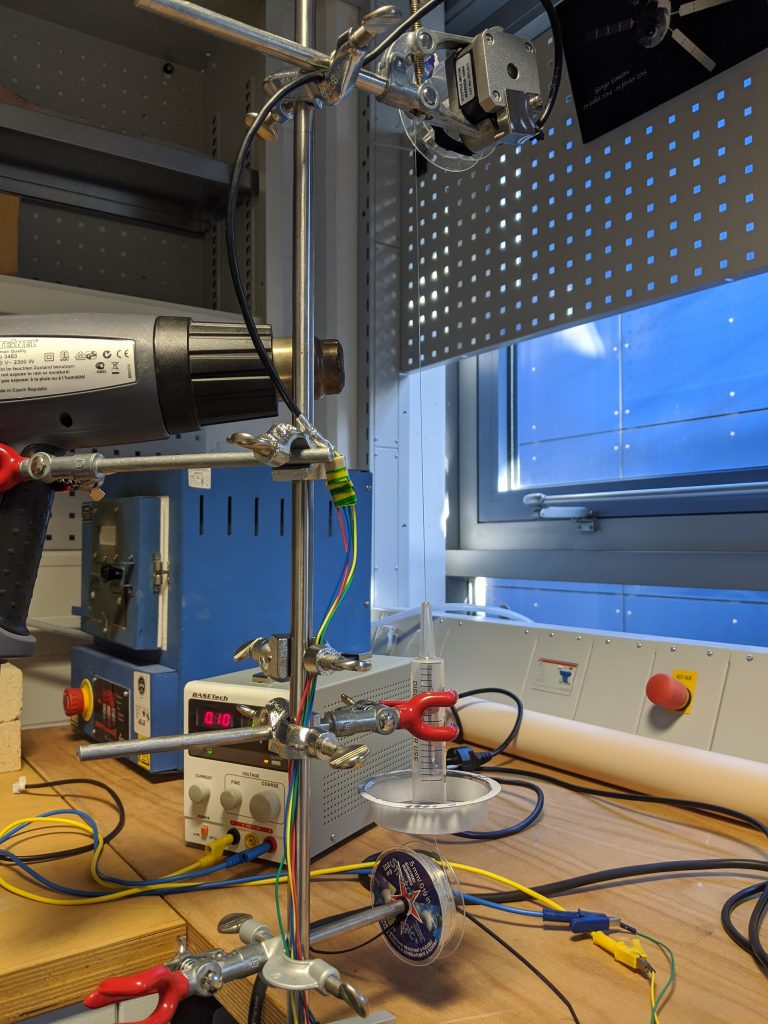
Optical fibre fabrication setup in EAC. ESA-J.Dalrymple.
This system uses flexible optical fibres to measure specific physical changes, such as the elongation of the spine or swelling. When a change is detected, an electric stimulus is sent to the affected area causing a carbon-nanotube based material in the suit to contract in just the right spot. In this way, the suit acts as a dynamic “artificial muscle”, automatically adjusting itself at different locations as needed.
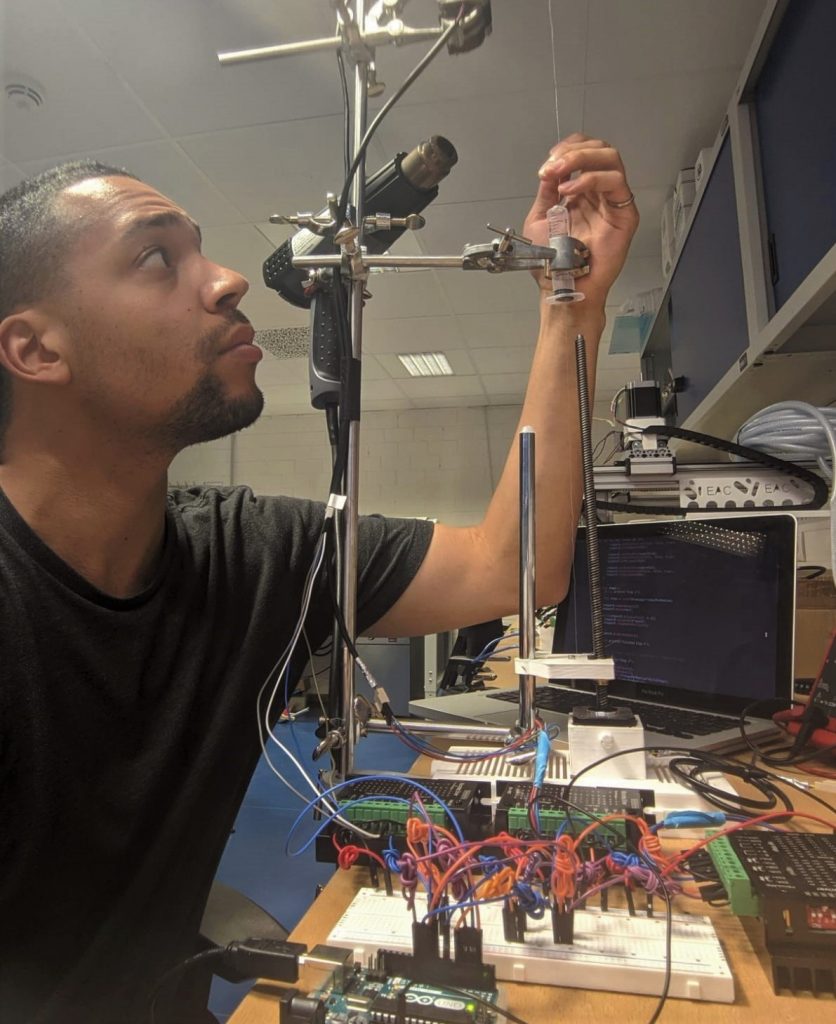
Creating the artificial muscle used for the new skinsuit. ESA-J.Dalrymple.
“With this approach we can produce a response comparable to our own muscles in terms of force and reaction speed, from the command through to the execution of the contraction signal.” Justin explains.
The device and properties of the stretchable optical fibre and ‘’artificial muscle’’ require further testing and examination to determine their potential for in-space use, but it is hoped they will soon aid in preventing muscle and bone deterioration in weightlessness – currently one of the biggest challenges of human spaceflight.
Improving the Tempus
The second project Justin tackled involved an ESA-supported telemedicine device called the Tempus Pro.
This portable vital-signs monitor enables data to be transmitted via a secure satellite link or phone network such as 4G. It’s used by ESA medical teams to record and transmit the vital signs of ESA astronauts upon their return from the International Space Station and was recently deployed as part of the Coronavirus response in Spain.
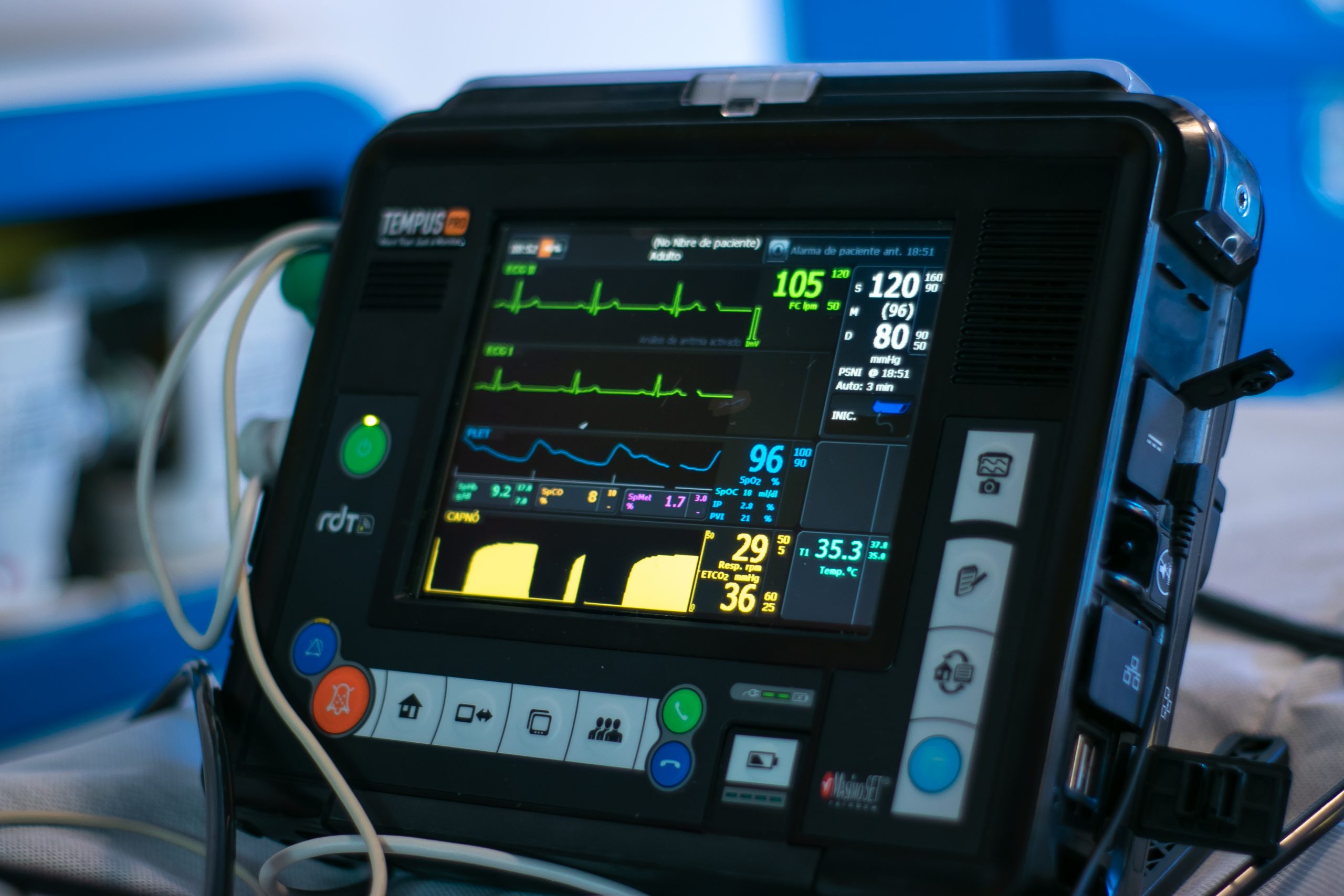
ESA-supplied Tempus Pro telemedicine device. Sistema d’Emergències Mèdiques (SEM), CC BY-SA 3.0 IGO
During his internship, Justin worked on an extension module for the Tempus. This adds the ability to send and receive biometric data from any wireless source – like a Fitbit or the Hexoskin smart shirt system that measures vital signs and transmits these to a tablet application.
The extension module aims to improve the usability of devices like the Tempus in harsh environments such as space, where resources and communication infrastructure are limited.
Looking ahead
The Tempus and the Skinsuit projects are just two examples of how the development of innovative medical devices and technologies can help astronauts in space and people on Earth.
“These sorts of biometric devices will be crucial to our success as we venture farther into space and away from the natural environment our bodies are used to,’’ Justin says.
Find out more about Spaceship here.


